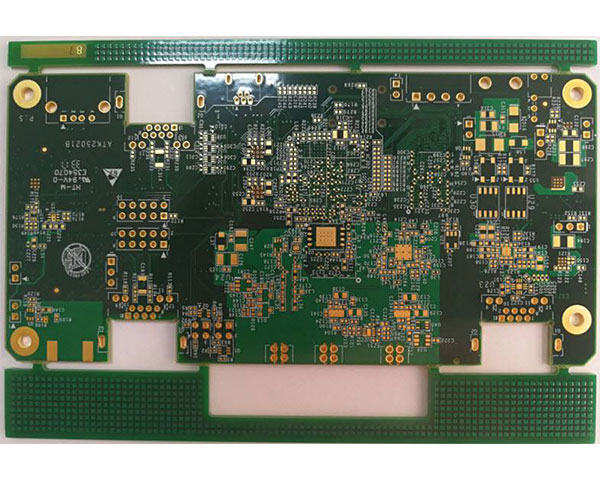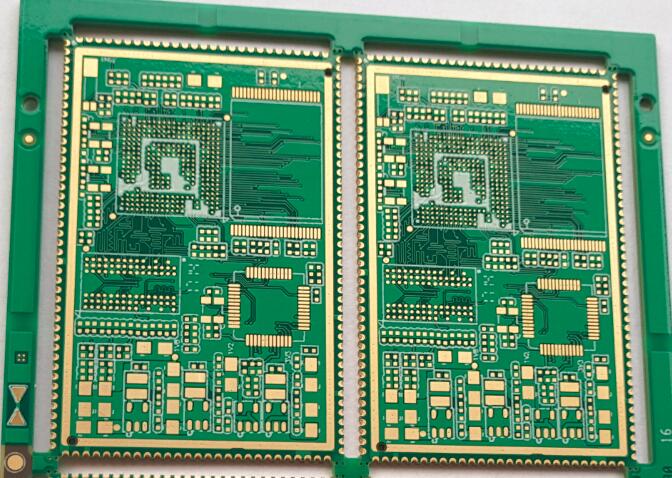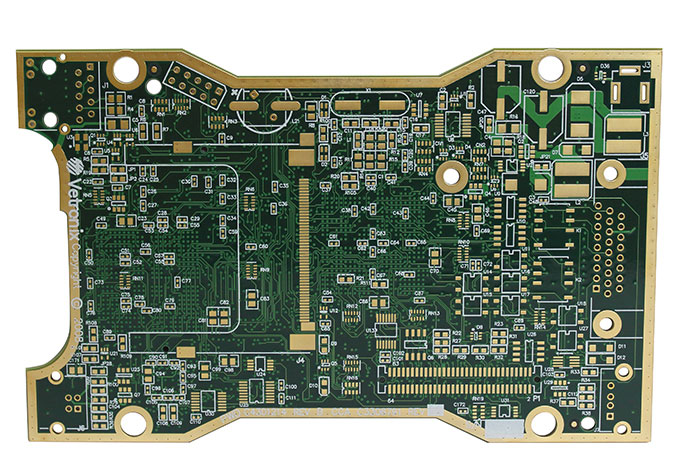-
 Flexible PCB Manufacturer & Assembly ServiceFlexible PCB Manufacturer & Assembly – One-stop servicesHitech Circuits Co.,Ltd is a profes...Read More
Flexible PCB Manufacturer & Assembly ServiceFlexible PCB Manufacturer & Assembly – One-stop servicesHitech Circuits Co.,Ltd is a profes...Read More -
 Ceramic PCB FabricationCeramic PCB and Substrate: Alumina PCB, Aluminum Nitride Base, Copper CladCeramic PCB (ceramic ...Read More
Ceramic PCB FabricationCeramic PCB and Substrate: Alumina PCB, Aluminum Nitride Base, Copper CladCeramic PCB (ceramic ...Read More -
 What is Heavy Copper Printed Circuit Board?Heavy Copper PCB Printed circuit boards (PCB) are usually coated with thick copper foil on...Read More
What is Heavy Copper Printed Circuit Board?Heavy Copper PCB Printed circuit boards (PCB) are usually coated with thick copper foil on...Read More -
 High Density PCB board (HDI PCB) ManufacturingHigh Density PCB board (HDI PCB) Manufacturer & Assembly – One-stop servicesWhat’s HDI...Read More
High Density PCB board (HDI PCB) ManufacturingHigh Density PCB board (HDI PCB) Manufacturer & Assembly – One-stop servicesWhat’s HDI...Read More
PCB Fabrication
PCB Fabrication, China PCB Circuit Board Manufacturing
As a leading China PCB manufacturer, Hitech Circuits has rich experience and extensive expertise, from PCB layout & design, and PCB manufacturing to PCB testing and after-sales, all processes are finished in our ISO-certified factory. We put quality as the first priority, each circuit board goes through a strict quality control process before delivery. We specialize in producing all kinds of printed circuit boards, including PCB prototypes, FR4 PCB, Double-sided PCB, Aluminum PCB, RF PCB, Ceramic PCB, High-Frequency PCB, HDI PCB, etc. If you are looking for a reliable PCB board manufacturer in China, please don’t heisitate to contact: sales@hitechcircuits.com

What is a Printed Circuit Board (PCB)?
PCB or Printed Circuit Board is the traditional name for the bare board of which we produce with the layout data and which will be used to mount the components on.
A printed circuit board, or PCB, is used to mechanically support and electrically connect electronic components using conductive pathways, tracks or signal traces etched from copper sheets laminated onto a non-conductive substrate.Components are generally soldered onto the PCB to both electrically connect and mechanically fasten them to it.
When the board has only copper tracks and features, and no circuit elements such as capacitors, resistors or active devices have been manufactured into the actual substrate of the board, it is more correctly referred to as printed wiring board (PWB) or etched wiring board.
PCBs can be single-sided (one copper layer), double-sided (two copper layers on both sides of one substrate layer), or multi-layer (outer and inner layers of copper, alternating with layers of substrate). Multi-layer PCBs allow for much higher component density, because circuit traces on the inner layers would otherwise take up surface space between components. The rise in popularity of multilayer PCBs with more than two, and especially with more than four, copper planes was concurrent with the adoption of surface mount technology. However, multilayer PCBs make repair, analysis, and field modification of circuits much more difficult and usually impractical.
Use of the term PWB or printed wiring board although more accurate and distinct from what would be known as a true printed circuit board, has generally fallen by the wayside for many people as the distinction between circuit and wiring has become blurred.
Today printed wiring (circuit) boards are used in virtually all but the simplest commercially produced electronic devices, and allow fully automated assembly processes that were not possible or practical in earlier era tag type circuit assembly processes.

Advantages of PCBs
PCBs (printed circuit boards) have, more or less, become a very vital part of modern electronic equipment. In fact, if you were to disintegrate any electronic equipment in your house, the chances are that you are going to come face to face with one of myriad types of PCBs. A basic printed circuit board is comprised of a very large number of passive and active components. They are connected from side to side with traces on the board. It is wholly possible to develop very large circuits on small printed circuits boards with the availability of very small sized electronic components.
But that is not all PCBs are good for. Printed circuit board offer varied advantages which make them the perfect choice for the PCB board manufacturers of electronic components, instruments and equipment everywhere.
Keep on reading to find out what they are.
Compact Size
A characteristic PCB includes a large number of electronic components. Most of these components are very small in size. It would be close to impossible to connect these components together with wires without the aid of printed circuit boards. A typical printed circuit board offers a simple platform to align the electronic components in a compressed and efficient way. This compactness allows creation of big and complicated electronic circuits in small form factors. This, in turn, takes less space in devices.
Ease in Repair and Diagnostic
One great thing about printed circuit boards is that they are helpful in performing diagnostics for a number of reasons. The electronic parts and their polarities on a properly designed printed circuit boards are evidently labeled on the board. This allows convenience during the installation process as well as repair process. Signal paths are often traced during diagnostics. Doing this would be wholly difficult to perform if the traces were not clear to the view and well organized.
Immune to Movement
Another worthwhile thing to notice is that all the components on a PCB are held fixed to the board. This is done by solder flux which does not allow them to move irrespective of the movement of the board itself. Because of this, the electronic circuit (that move or shake) can be placed in devices without worrying about the possibility of displacement of the electronic components and any subsequent electronic short circuits.
Low Electronic Noise
A printed circuit board (that has been properly laid out) lessens electronics noise. If it is not laid out properly then the noise could significantly degrade performance. The electrical components on a printed circuit board are organized in a way that the path lengths of the electrical current between them are lessens. This leads to low radiation and pickup of electromagnetic waves, thus ensuring lower cross talk in between components and in between varied traces, which usually is a major concern in electronic circuits.
Types of Printed Circuit Boards
PCB board fabrication are integral parts of all electronic devices, ranging from simple digital wrist watches and handheld games, to highly complicated satellite systems. PCB are manufactured in several ways to meet the unique requirements of varied industries. They can be fabricated in single sided, double sided, and multi-layered configurations as per the demands.
If you are a first time customer, it is important that you must have a clear understanding on the basic types of PCB.
PCB Classification
The following listed are the three basic types of PCB used for several industrial, commercial, and domestic applications.
Single-Sided PCB – This is the simplest and the most commonly used type of PCB. As the name suggests, these PCB are designed with single substrate. The design of these PCB is such that all copper traces are etched on one side, and the electrical components on the other side of the board. Compared to other types, these PCB are easier to design and fabricate. They are commonly used in calculators, printers, and sensor products, among others.
Double-Sided PCB– These types of PCB are constructed by mounting electronic components and copper traces on both sides of the substrate. Demands for double sided PCB are on the rise with increasing complexity and density of products. Common applications include control relays, converters, power supplies, power monitoring, and traffic systems.
Multi-Layer PCB – These types of PCB are characterized by several substrate layers. Each layer is separated from the other by an insulating material. Depending on the complexity of the application, these PCB can be designed with 4, 6, 8, or 10 layers. The layers can even be increased up to 42. Multi-layer PCB are chosen for extremely complicated electronic circuits like central fire alarm systems, fiber optic receptors, nuclear detection systems, and space probe equipment.Having a comprehensive understanding of the basic types of PCB will help you choose the right board for your applications. You can speak to the manufacturer and gain more information pertaining to the pros and cons of each type. Also, you can let your manufacturer know about your requirements; he can suggest the right PCB type that best suits your applications.

Choose the right China PCB manufacturer
PCB or the printed circuit board is certainly one of the most preferred electronic devices today. In keeping with this trend, several companies have come out to manufacturer the PCBs as well. In fact, a few minutes’ search will tell you how numerous this list of manufacturers is. That has certainly one advantage – it has made the market more competitive. But, there are drawbacks as well.
Since there are so many options, you always have the chance of getting confused. So, it is essential that you pick up the right company. Remember, manufacturing Quick turn PCB prototypes is a complex task.
There are plenty of intricate technicalities involved in the entire process. So, you have to be very careful about the quality of the experts who are working on the project. Often, the manufacturers of PCB don’t meet your specific requirements. So, this is another factor that you have to look after.
Finally, finding the PCB manufacturer in China for the small companies has always been a problem. Those big companies out there don’t pay heed to the requirements of the small companies. So, the small companies find it almost compulsory to go to some second grade company and compromise the quality of the PCB.

0086-755-29970700
sales@hitechpcb.com; sales@hitechcircuits.com
3F, B5 Dong, Zhimeihuizhi, FuYong, Bao’an Dist. Shenzhen, GuangDong, China 518103
 Chinese
Chinese English
English Russian
Russian Spanish
Spanish Portuguese
Portuguese





